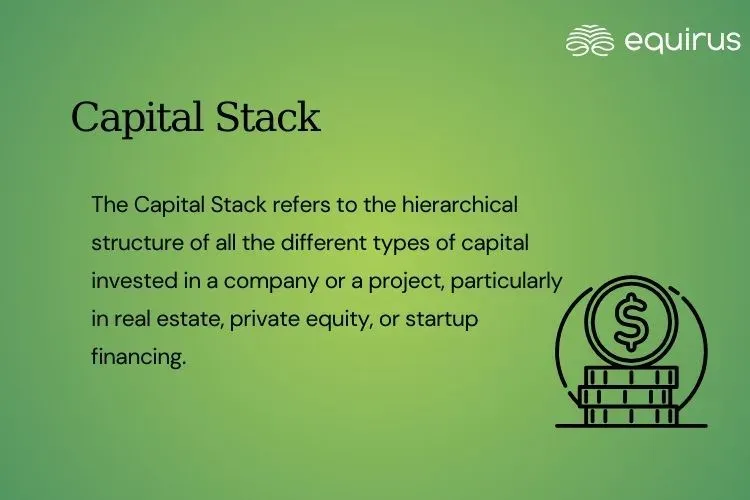Capital Stack

Key Highlights
-
The Capital Stack refers to the hierarchical structure of all the different types of capital invested in a company or a project, particularly in real estate, private equity, or startup financing.
-
It shows who has the first claim on the company’s assets and profits in case of cash flow distribution, liquidation, or bankruptcy.
What is Capital Stack?
The Capital Stack refers to the hierarchical structure of all the different types of capital invested in a company or a project, particularly in real estate, private equity, or startup financing. It shows who has the first claim on the company’s assets and profits in case of cash flow distribution, liquidation, or bankruptcy.
Why it Matters?
Understanding the capital stack is important because it tells you:
-
Who gets paid first
-
Who carries the most risk
-
Who enjoys the highest potential return
The higher up you are in the stack, the greater the risk, but also the greater the potential reward.
Main Components of the Capital Stack
From lowest risk/return (at the bottom) to highest risk/return (at the top):
1. Senior Debt
- Lowest risk, lowest return
- First to be repaid
- Secured by collateral (like property or equipment)
- Includes bank loans or bonds
- Fixed interest payments
2. Mezzanine Debt
- Riskier than senior debt, but still gets paid before equity
- Often unsecured or backed by subordinated liens
- Higher interest rates and sometimes includes equity kickers (like warrants)
3. Preferred Equity
- Equity holders with special rights (e.g., fixed dividends, priority over common shareholders)
- May not have voting rights
- Paid after debt, but before common equity
4. Common Equity
- Highest risk, highest return
- Last to be paid during liquidation
- Includes founders, public shareholders, or investors
- Gains the most if the company performs well
Example
Imagine a startup raises:
₹50 lakh in bank loans (senior debt)
₹20 lakh from an angel investor (mezzanine debt with warrants)
₹30 lakh from a venture capital firm (preferred equity)
₹10 lakh from founders (common equity)
In a liquidation, the bank gets paid first, followed by the angel investor, then the VC, and lastly the founders—if anything is left.
Capital Stack in Real Estate and Startups
In real estate, the capital stack helps investors assess how secure their investment is.
In startups, VCs and angel investors look at where they sit in the stack to estimate risk and exit potential.
